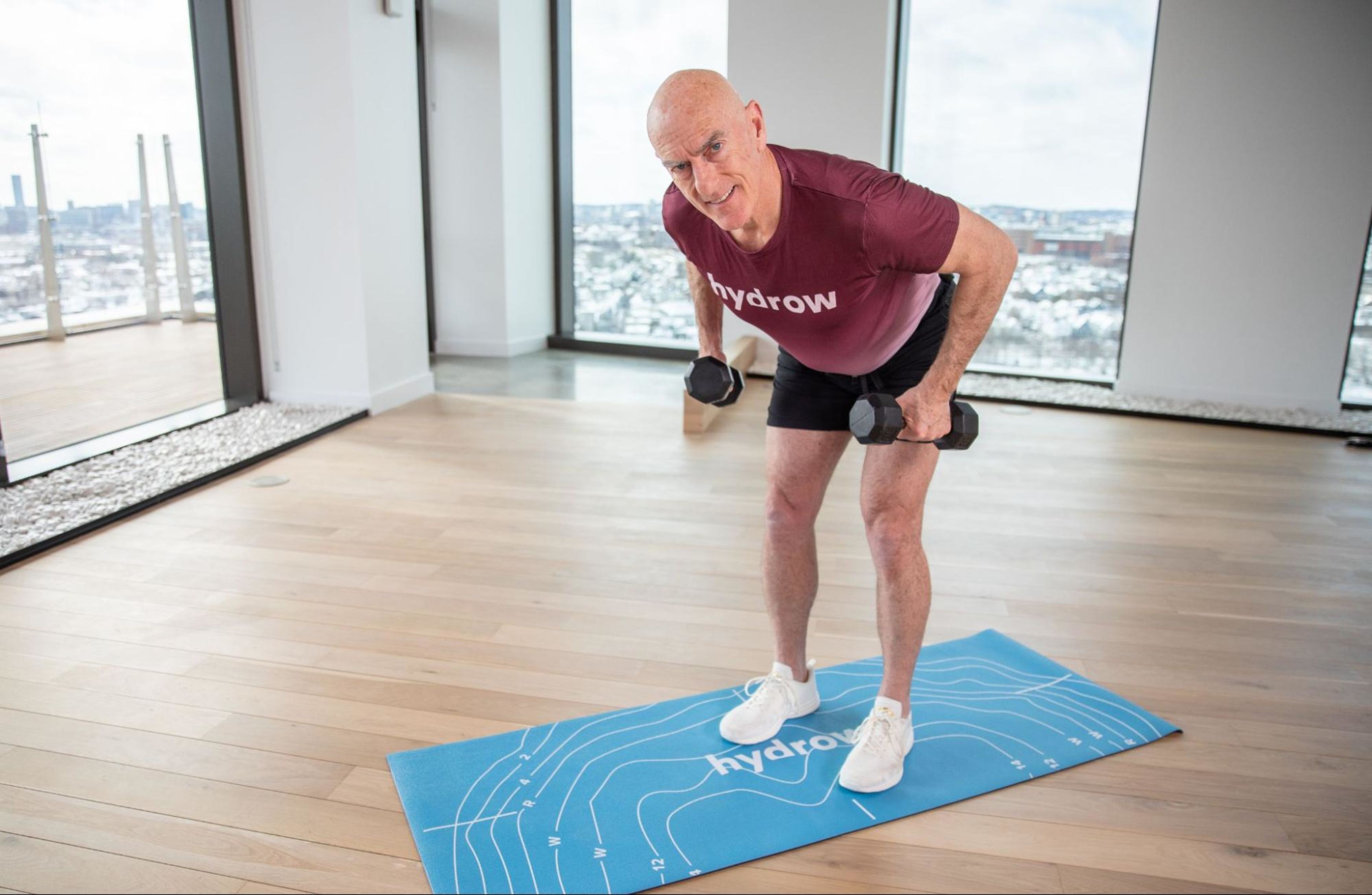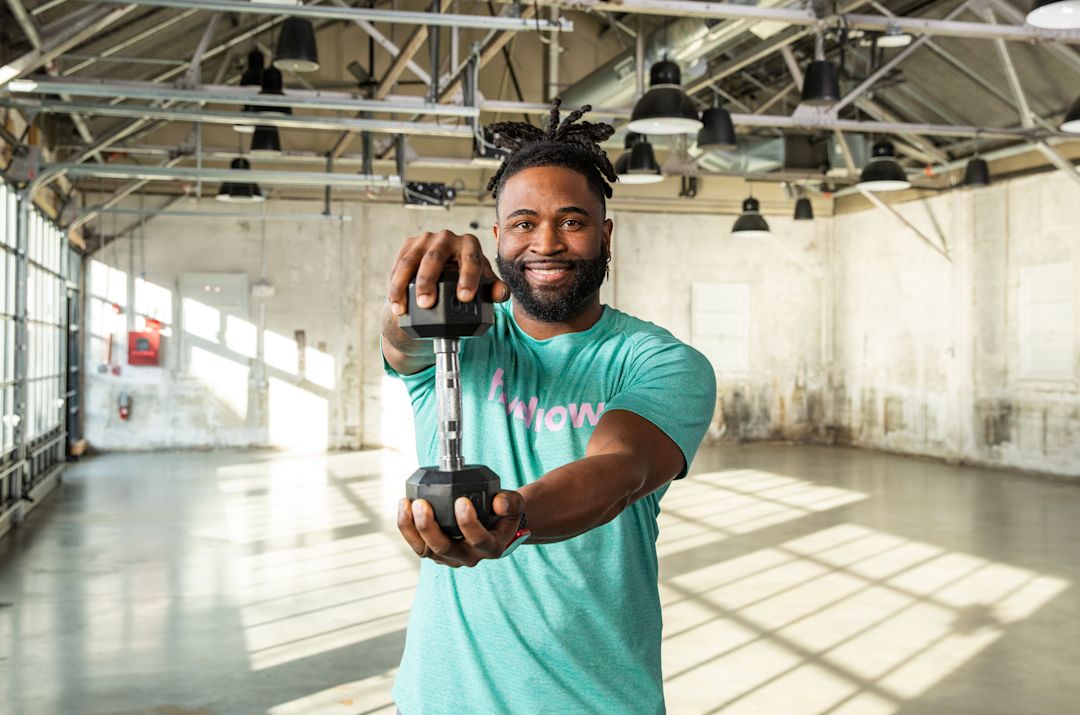How to Build Upper-Body Strength: 12 Amazing Exercises to Try

Upper-body strength isn’t just about flexing your biceps in the mirror at the gym. Building muscle and strength in your arms, shoulders, back, and chest helps you maintain proper posture, navigate daily activities like carrying groceries with ease, and feeling stronger in your life.
And it’s simpler than you might think: You don’t need heavy weights or lots of equipment to build upper-body strength. Instead, you need a strategic strength training plan and the dedication to stick with it.
Keep reading to learn about:
Let’s dive in!
Key principles for building upper-body strength
Some of the core tenets of building upper-body strength apply to building strength anywhere in your body. For example, committing to a consistent routine is key. You should aim to strength train each muscle group—in your upper body or anywhere else—at least twice each week and build up to three weekly strength workouts, according to the American Council on Exercise (ACE).
Many lifters divide their upper-body workouts into push and pull movements. This will help you build well-balanced upper-body strength. Your "push” muscles include those in your chest, shoulders, and triceps. Your “pull” muscles include those in your upper back, lats, biceps and forearms, according to the University of Utah Health.
The 12 best exercises for building upper-body strength
Many effective upper-body exercises don’t require any equipment. But having access to a few pairs of dumbbells at different weights and some resistance bands can help you make faster progress. Here are some of the best upper-body moves to try, including:
High plank
Push-up
Biceps curl
Triceps extension
Bent-over row
Lat pulldown
Overhead press
Lateral raise
Front raise
Single-arm farmers carry
Chin-up
Pull-up
1. High plank
Planks stabilize and strengthen all the muscles of your core, including your back muscles. They also challenge your arms and shoulders—with no equipment.
Start balancing on your toes and palms, with your palms planted directly under your shoulders and your body forming a straight line from head to hips to heels.
Engage your core and glutes to maintain this position for your desired amount of time.
You can also perform a plank on your forearms instead of your palms if you have wrist or shoulder pain.
2. Push-up
This pushing exercise targets your chest, shoulders, and core using just your body weight.
Begin with your hands and knees on the floor, then straighten out your legs, with your palms planted directly under your shoulders and your body forming a straight line from head to hips to heels.
Bend your elbows at about 45-degree angles from your torso to lower your chest toward the floor.
When you’re about an inch or two from the ground, press through your palms to push your body back up to the starting position while maintaining an engaged core.
Continue for your desired number of reps.
If a full push-up is too challenging for now, start by placing your hands on a wall, countertop, or step for an incline push-up, which takes some of the weight off of the full movement.
3. Biceps curl
Biceps curls are among the most famous arm exercises. They strengthen the muscles on the fronts of your upper arms. You can use dumbbells, a resistance band anchored under your feet, or items of similar weight and size that you have around the house.
Start standing tall, with your feet planted shoulder-width apart, holding a weight in each hand by your sides, palms facing upwards.
Engage your core and squeeze your arm muscles as you curl the weights toward your shoulders.
Slowly and with control, lower the weights back down to the starting position.
Continue for your desired number of reps.

Explore Hydrow’s library of 5,000+ rowing, circuit training, yoga, Pilates, and mobility workouts.
4. Triceps extension
Your triceps are a group of three upper-arm muscles on the backs of your arms. Just like with biceps curls, you can use a dumbbell, resistance band, or household item for this exercise.
Start standing tall with your feet planted shoulder-width apart holding a single weight over your head.
Keeping your upper arms steady and close to your ears, bend your elbows to lower the weight behind your head.
Press the weight back up to the starting position.
Continue for your desired number of reps.
5. Bent-over row
Rows are pulling movements, and this version engages your back, shoulders, and arms using dumbbells, a resistance band anchored under your feet, or items you have around the house.
Start standing with your feet shoulder-width apart and a dumbbell in each hand by your sides, palms facing each other, with a slight bend in your knees.
Hinge from the hips until your torso is at about 45 degrees to the floor, maintaining a long, organized spine.
Let your weights hang in front of you.
Squeeze your shoulder blades together to pull the weights toward your chest, keeping your elbows close to your ribs. Pause here briefly.
Slowly and with control, lower the weights back down to the starting position.
Continue for your desired number of reps.
6. Lat pulldown
This is another pulling upper-body movement, but done above your head. It mainly targets the latissimus dorsi in your back, hence the name. You can use a machine at the gym for this movement or a mini loop resistance band.
Start standing tall or seated on a bench with your feet planted shoulder-width apart.
Loop a mini resistance band around your wrists.
Raise your arms over your head with your palms facing away from you. Position your hands about shoulder-width apart so there’s tension in the band.
Pull your shoulder blades together and bend your elbows to pull the band apart and down toward your chest.
Pause here briefly.
Slowly and with control, return your hands above your head without locking out your elbows.
Continue for your desired number of reps.
7. Overhead press
Overhead pushing movements are just as important. You can do this exercise with weights or household items to build strength in your back, arm, and shoulder muscles.
Start standing tall or seated on a bench with your feet planted shoulder-width apart holding a dumbbell in each hand in front of your shoulders at shoulder height, palms facing away from you.
Press the weights directly over your head without locking out your elbows. The weights should almost touch each other above you.
Slowly and with control, lower the weights back down to your shoulders.
Continue for your desired number of reps.
8. Lateral raise
Even light weights or water bottles can feel challenging during this arm and shoulder movement.
Start standing tall with your feet planted shoulder-width apart holding a dumbbell in each hand by your sides, palms facing toward each other.
With a slight bend in your elbows, lift your arms straight out to your sides just short of shoulder level.
Pause here briefly.
Slowly and with control, lower your arms back down to your sides.
Continue for your desired number of reps.
9. Front raise
Similarly to the lateral raise, it doesn’t take much to make the front raise feel challenging. This upper-body exercise targets different areas of your arms and shoulders.
Start standing tall with your feet planted shoulder-width apart holding a dumbbell in each hand by your sides, palms facing you.
With a slight bend in your elbows, lift your arms straight out in front of you until about shoulder level.
Pause here briefly.
Slowly and with control, lower your arms back down to your sides.
Continue for your desired number of reps.

Did you know?
Over 90% of Hydrow members are still active one year later.
10. Single-arm farmers carry
This functional movement mimics carrying a heavy bag on one side of your body. In addition to building arm and shoulder strength, it also helps stabilize and strengthen your core. You’ll need one heavy weight or household item for this exercise.
Start standing tall holding a dumbbell or kettlebell in one hand at your side.
Keep your back straight and avoid leaning to the side holding the weight as you walk a predetermined distance or for a certain amount of time.
Turn around and return to the start.
Switch hands and repeat.
Continue alternating sides for your desired number of reps or amount of time.
11. Chin-up
You’ll need a sturdy bar for this arm and back exercise.
Stand under a chin-up bar with your arms overhead, palms facing you.
Grasp the bar firmly (you may need to jump or stand on another piece of gym equipment to do so) with your thumbs wrapped around the bar.
Engage your core and exhale as you pull your body upward. Think about pulling your elbows and shoulders back and down.
Pull until your chin is level with the bar.
Pause here briefly, then lower back down with control until your arms are fully extended.
Continue for your desired number of reps.
12. Pull-up
A pull-up is often an even more difficult version of a chin-up, so you may want to practice chin-ups first. If you’re not quite ready for a full pull-up, you can use a long loop resistance band for an assisted pull-up.
Stand under a pull-up bar with your arms overhead, palms facing away from you.
Grasp the bar firmly (you may need to jump or stand on another piece of gym equipment to do so) with your thumbs wrapped around the bar.
Engage your core and exhale as you pull your body upward. Keep your shoulders back and down.
Pull until your chest is level with the bar.
Pause here briefly, then lower back down with control until your arms are fully extended.
Continue for your desired number of reps.
Tips for structuring an effective upper-body workout routine
You don’t need to do all of the exercises above in every upper-body workout. In fact, you shouldn’t! Start with three or four movements that work a mix of different muscles in different ways. Begin with 10 to 15 repetitions or 30 seconds of each exercise, and build up to two or three sets, per the ACE.
You’ll also want to give yourself about 48 to 72 hours of recovery time in between sessions that work the same muscle groups, per the ACE. For example, if you work your upper-body muscles on Monday, then you can work your lower-body muscles Tuesday before returning to your upper-body muscles on Wednesday or Thursday.
This recovery time is crucial for building upper-body strength. That’s because during rest, your muscles heal and repair, growing stronger and bigger in the process.
Additionally, make sure to warm up before strength training your upper body. Start with a few minutes of light rowing to get your heart rate up and include some dynamic warm-up exercises like arm circles and torso twists to prepare the muscles and joints you’re about to work.
Alongside your fitness plan, you’ll also want to fuel your body for strength-building success. That involves eating enough calories to power all your activity, with a particular focus on muscle-building protein. While recommendations vary, many organizations now suggest you should aim for around 1 gram of protein per pound of your body weight every day if you want to build muscle and strength.
Stay hydrated, too. Dehydration can lead to noticeable decreases in strength, per the National Academy of Sports Medicine. Drink plenty of water, and don’t forget that the fluids you get from the foods you eat “count” too.
Common mistakes to avoid when building upper-body strength
To maximize your efforts, make sure you’re not guilty of any of these common mistakes that could stall your progress.
Skimping on recovery. Too few rest days (and too little sleep!) can make it harder to build upper-body strength.
Using improper form. When you don’t perform your upper-body exercises properly, you don’t get as much out of them—and you could end up hurting yourself.
Eating too little. Many people cut back on calories when they start strength training, especially if they’re also hoping to burn fat, but you need to give your body adequate fuel (especially from protein) if you want to build muscle and strength.
Not challenging yourself continuously. When your usual reps, sets, or weights start to feel a little too easy, it’s time to up the intensity, either by doing more reps or sets or moving up to a heavier weight. This concept, called progressive overload, means your body will keep adapting and growing stronger rather than plateauing.
Get started with upper-body strength training today!
Improving your upper-body strength will help you maintain and/or improve proper posture, avoid aches and pains, and carry out everyday activities and workouts with ease.
Looking for a way to incorporate more strength training into your exercise routine? Hydrow offers guided strength training workouts for every fitness level, all led by world-class Athletes who coach you through each movement and help you stay consistent. Additionally, our rowing workouts target 86% of your muscles with every stroke, delivering full-body training and real results.
Explore Hydrow’s strength workouts and see how far you can go.

Explore Hydrow's library of strength training workouts.








